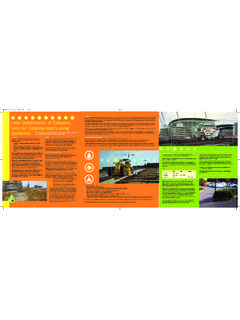Transcription of Parylene Conformal Coating Specifications & …
1 Material taken from this website Parylene Conformal Coating Specifications & Properties I. Introduction Parylene is the generic name for members of a unique polymer series. The basic member of the series, called Parylene N, is poly-para-xylylene, a completely linear, highly crystalline material. Parylene C, the second commercially available member of the series, is produced from the same monomer modified only by the substitution of a chlorine atom for one of the aromatic hydrogens. The structures are shown in Figure 1. Parylene N,C & D Chemical Structures (right). Parylene D, the third member of the series, is produced from the same monomer modified by the substitution of the chlorine atom for two of the aromatic hydrogens.
2 Parylene D is similar in properties to Parylene C with the added ability to withstand higher use temperatures. Parylene N is a primary dielectric, exhibiting a very low dissipation factor, high dielectric strength, and a dielectric constant invariant with frequency. This form has the highest penetrating power of all the Parylenes. Parylene C has a useful combination of electrical and physical properties plus a very low permeability to moisture and other corrosive gases. Along with its ability to provide a true pinhole free Conformal insulation, Parylene C is the material of choice for Coating cassemblies. ritical electronic Due to the uniqueness of the vapor phase deposition, the Parylene polymers can be formed as structurally continuous films from as thin as a fraction of a micrometer to as thick as several mils.
3 II. The Deposition Process The Parylene polymers are deposited from the vapor phase by a process which in some respects resembles vacuum metallizing. Unlike vacuum metallization, however, which is conducted at pressures of 10-5 torr or below, the Parylenes are formed at around torr. Under these conditions the mean free path of the gas molecules in the deposition chamber is in the order of cm. Therefore, unlike vacuum metallizing, the deposition is not line of sight, and all sides of an object to be encapsulated are uniformly impinged by the gaseous monomer. This is responsible for the truly Conformal nature of Coating . The process consists of three distinct steps as outlined in Figure 2 for Parylene N.
4 The first step is vaporization of the solid dimer at approximately 150 C. The second step is the quantitative cleavage (pyrolysis) of the dimer at the two methylene-methylene bonds at about 680 C to yield the stable monomeric diradical, para-xylylene. Finally, the monomer enters the room temperature deposition chamber where it simultaneously adsorbs and polymerizes on the substrate. No liquid phase has ever been isolated and the substrate temperature never rises more than a few degrees above ambient. A necessary fourth component in this system is the mechanical vacuum pump and associated protective traps. Figure 2. Parylene Deposition Process The equipment can be modified to meet the requirements or configuration of the items to be coated.
5 Present Coating chambers vary in size from 23 cm in diameter and 31 cm long to a 85 cm high hemi-cylindrical unit. One particular configuration, 45 cm in diameter and 60 cm high, was designed specifically for circuit boards and can accommodate up to two hundred 12 cm wide by 16 cm long boards. The process is inherently simple and can be conducted with a minimum of supervision. Compared with vacuum metallizing, deposition rates are fast, especially for Parylene C, which is normally deposited at about mils/hr. The deposition rate of Parylene N is somewhat slower. Kinetic studies have established that this rate is directly proportional to the square of the monomer concentration and inversely proportional to the absolute temperature.
6 III. Properties The electrical, mechanical, thermal, barrier, optical, and other properties of Parylene N, C and D are discussed below. These properties are compared to those reported for other Conformal Coating materials such as epoxides, silicones, and urethanes. A. Electrical Properties The electrical properties of Parylene N, C, and D are shown in Table 1. Table 1. Parylene Electrical Properties 1. Thin Film Dielectric Properties One of the features of the Parylenes is that they can be formed in extremely thin layers. The breakdown dc voltages of both Parylene C and N films have been determined as a function of polymer thickness, a plot of which is shown in Figure 3.
7 Parylene C is superior to N in this respect for films under 5 micrometers ( in). These data show that both Parylenes have excellent dielectric withstanding voltages even below the 1 micrometer thickness range, and the voltage breakdown per unit thickness generally increases with decreasing thickness. Figure 3 Breakdown Voltage of Parylene C and N vs Polymer Film Thickness 2. Circuit Board Insulation Resistance A critical test of the protection afforded by the Parylene Coating is to coat circuit board test patterns (as described in MIL-I-46058C) and subject them to insulation resistance measurements during a temperature-humidity cycle (MIL-STD-202, methods 106 and 302).
8 In brief, this test consists of ten cycles (one cycle per day), with each cycle consisting of seven steps. The seven steps range from low temperature, low humidity (25 C, 50% RH) to more severe conditions (65 C, 90% RH). Resistance readings are taken initially and at the 65 C, 90% RH step for each cycle of the ten day test. Table 2. Parylene C Circuit Board Screening (close window) Insulation Resistance (ohms), MIL-STD-202, method 302 Results are shown in Table 2 for Parylene C Coating thicknesses from in to in. It is interesting to note that even for the very thin coatings ( in), the insulation resistance values are about one order of magnitude above the prescribed specification .
9 B. Physical and Mechanical Properties Physical and mechanical properties of the Parylenes are summarized in Table 3. Because of their high molecular weight (~500,000) and because the melting temperatures and crystallinity are high, the Parylenes cannot be formed by conventional methods such as extrusion or molding. Solubility in organic or other media, except at temperatures above 175 C, is so low that they cannot be formed by casting. Impact resistance is high when the Parylene polymers are supported on test panels. Gardner falling ball impact tests on in thick Parylene C coated steel "Q" panels are in the 250 in-lb range. Table 3. Parylene Physical and Mechanical Properties Wear index values (measured on a Taber Abraser machine using CS-17 "Calibrase" wheel with 1000 gram weight) were for Parylene C and for Parylene N.
10 By comparison, polytetrafluoroethylene (Teflon ) is , high impact polyvinylchloride is , epoxide is and urethane is C. Thermal, Cryogenic, and Vacuum Properties 1. Thermal Based on an Arrhenius extrapolation of test data, Parylene C is expected to survive continuous exposure to air at 100 C for ten years (100,000 hours). In oxygen free atmospheres, or in the vacuum of space, the Parylenes are expected to serve similarly on continuous exposure to 220 C . In all cases, higher temperature shortens use life. If the requirements for your application are near or exceed this time-temperature-atmospheric conditions envelope, it is recommended that you test the complete structure under conditions more closely resembling the actual conditions of intended use.
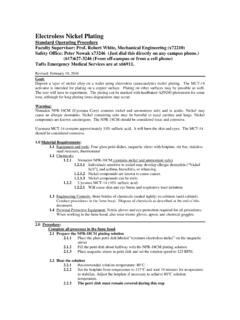
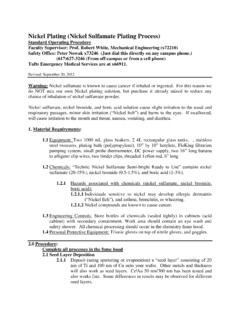
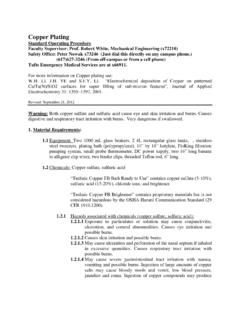

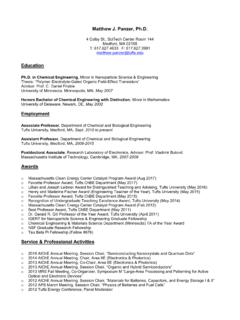
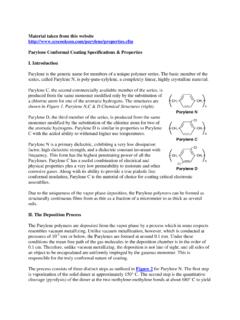




![ABSTRACT arXiv:1409.1556v6 [cs.CV] 10 Apr 2015](/cache/preview/4/e/0/e/4/4/2/c/thumb-4e0e442c20fc4f8e108fa20a1095af07.jpg)
